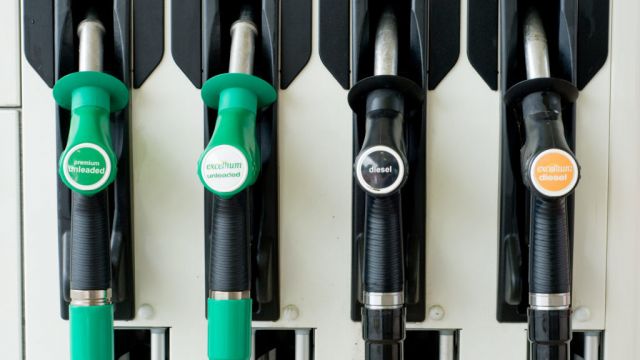Ireland’s drivers are once again paying more at the pump thanks to a rise in the cost of buying diesel. The per-litre price of diesel has risen by four per cent in one month, making a litre of diesel almost 20c more expensive than a litre of petrol.
In fact, the average per-litre cost of diesel has now risen to €2.02, compared to a national average of €1.84 per litre for petrol. For the year to date, that makes petrol 11 per cent more expensive than it was in October last year, but diesel has gone up by 30 per cent.
According to the AA, which monitors petrol and diesel prices nationwide, it means that the average Irish motorist is spending €2,210 annually if they drive a petrol-engined car, and €2,020 to keep a diesel-engined car. That means petrol drivers are spending €219 extra per year, while diesel drivers are spending, on average, €126 more per year.
How are diesel drivers still seeing lower cost increases, when the fuel is so much more expensive per litre? Simple — diesel still has a significant economy advantage.
The AA’s calculations assume that a diesel car will travel, on average, around 850km on a tank vs 700km for petrol, which is why even though diesel is more expensive, the consumer is still likely to use less of it for the same average 17,000km per year.
“We have seen quite a spike in the price of diesel in the last month, even though petrol prices have remains largely stagnant over the same period,” said AA Ireland Head of Communications, Paddy Comyn. “Sales of diesel cars were very much in the majority from 2008 until quite recently, so these high fuel prices will be affecting large amounts of motorists nationally, at a time when energy prices are rising across the board.”
Why is diesel suddenly so much more expensive than petrol? Clearly, the taxation regime plays a significant part, but there is a broader reason — less diesel is being produced worldwide.
According to Reuters, there is a significant shortfall in global diesel production right now, as refineries struggle to re-expand to meet fast-rising worldwide demand as the pandemic recedes.
The Reuters report notes that: “The global petroleum and refining system has proved unable to keep up with rapid growth in fuel consumption as a result of the manufacturing and freight-led recovery after the coronavirus pandemic.”
Both the US and China — the globe’s two largest fuel refining markets — are producing less diesel simply because their capacity to do so has been reduced both by refineries that were shuttered during the pandemic and which have not yet re-opened, and because raising diesel production would leave refineries with by-products for which there is less demand.
There is a further squeeze on diesel because, chemically speaking, it sits in the same family as the likes of heating oil for which there is a spike in demand, further reducing the ability of refineries to keep pace with demand. Even if refining capacity could be expanded, the supply of crude oil has also fallen thanks to cuts in OPEC production, so a refinery recovery would simply “move the bottleneck.”
What could re-balance the diesel market is something none of us want to see — another major recession, but one seems likely.
The World Trade Organisation, the International Monetary Fund, the World Bank, and the United Nations are all warning of a major worldwide slowdown in 2023.
Recession or no, diesel’s says are clearly numbered, in spite of some arguments that the fuel — lower in carbon emissions by volume than petrol — still has some part to play in the transition to greener energy.
The primary argument in diesel’s favour has been that we’ll continue to need it for heavy goods vehicles, whose weight, size, and necessity for long-range operation makes them generally unsuitable for battery power.
That equation may be changing, however. In China, electric power is now quickly coming to be seen as the right answer even for heavy trucks, and it’s down to an older EV range solution which has been largely forgotten where passenger cars are concerned — battery swapping.
China is the world’s largest market for commercial vehicles, and according to a report by Bloomberg, electric van sales have gone from one per cent of the market to 10 per cent just in the past two years.
Sales of heavy trucks with electric power have risen by 224 per cent in the past year to command 3.4 per cent of the market — about where electric passenger cars were in Europe a few short years ago.
Bloomberg also reports that the number of battery swapping stations for heavy trucks has expanded rapidly — up by 318 per cent just in the last year. One single city, Tangshan, has registered 4,400 heavy electric trucks with battery-swapping capability up to September of this year.
The battery-swapping idea has more benefits than just the obvious. Clearly, it’s a faster way to recharge a truck than sitting around waiting for a huge battery to charge, but it also means that you can get away with fewer heavy-duty recharging points, as well as potentially smaller, shorter range batteries which will improve vehicle weight and cost.
If heavy commercial vehicles reach an electric tipping point more quickly than had been expected, then diesel’s days could be coming to a far more rapid end.







